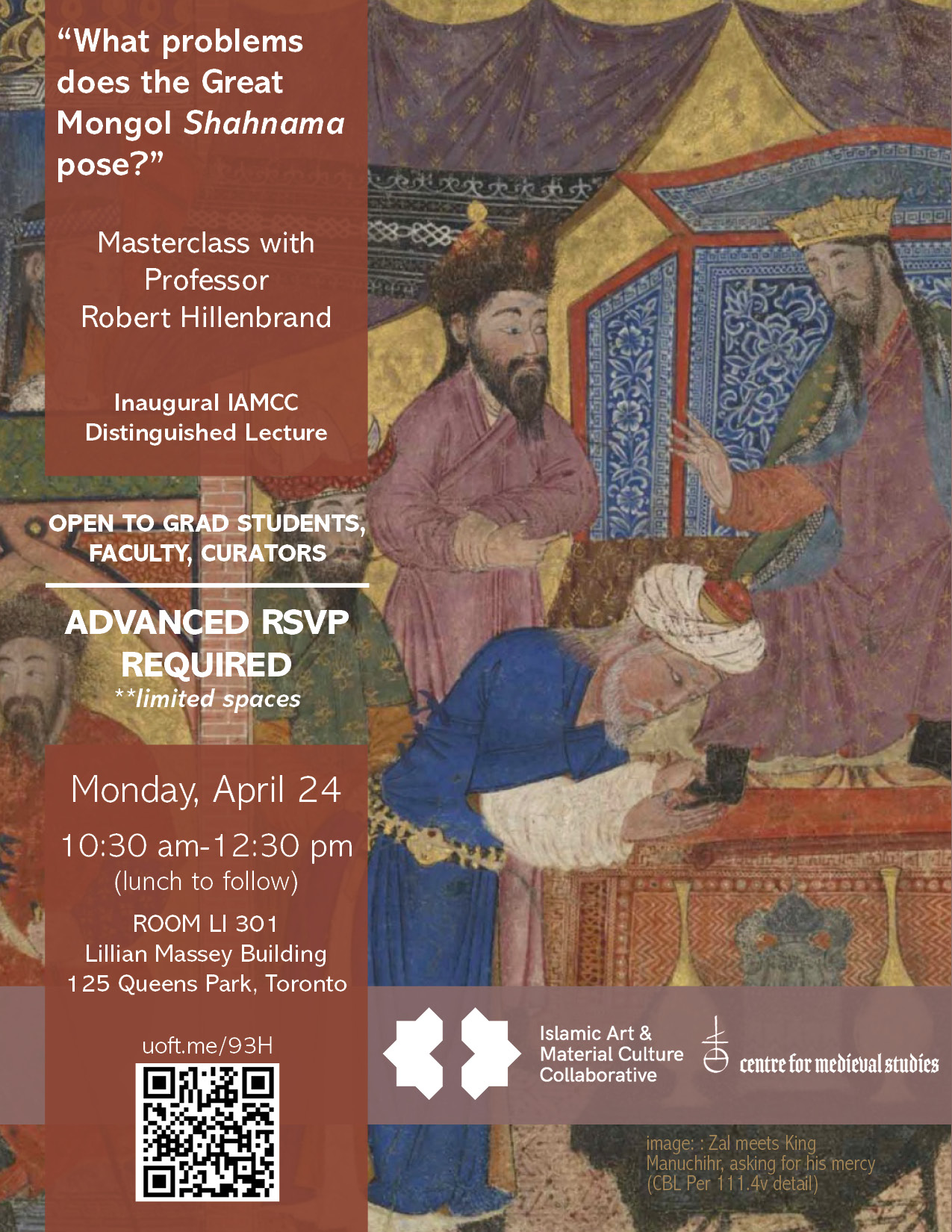IAMCC Distinguished Lecture
When and Where
Speakers
Description
Title: "What problems does the Great Mongol Shahnama pose?"
RSVP required (limited spaces available). Upon registration, participants will receive an email with suggested readings and an opportunity to submit advance questions.
Abstract: The Great Mongol Shahnama signaled an extraordinary chapter in the visual culture of Iran. Begun in the 1330s in Tabriz during the reign of the Mongol ruler Abu Sa’id, the manuscript was dismembered and dispersed in the early 20th century. The Great Mongol Shahnama is characterized by its large-scale folios and unprecedented innovations such as the development of pictorial space, an expanded range of emotional expression, experiments in composition and format, and a radical approach to colour co-ordination and contrast. This masterclass explores some of the problems that the 58 surviving paintings pose including the manuscript’s identity, reception, styles(s), and the artistic milieu of its production.
Professor Robert Hillenbrand was educated at Cambridge and Oxford and has spent most of his career teaching at the University of Edinburgh, with visiting professorships at Princeton, UCLA, Bamberg, Leiden, Dartmouth College, New York, Cairo, and Groningen. He is currently Emeritus Professor of Islamic Art at the University of Edinburgh and Honorary Professor of Islamic Art at the University of St Andrews. His scholarly interests focus on Islamic architecture, painting, and iconography, with particular reference to Iran and early Islamic Syria. His thirteen books include Imperial Images in Persian Painting; Islamic Art and Architecture (revised and expanded edition, 2021); The Architecture of Ottoman Jerusalem: An Introduction; the prize-winning Islamic Architecture: Form, Function and Meaning; The Sheikh Zayed Grand Mosque. A landmark of modern Islamic architecture; An unknown masterpiece from Mongol Iran; Islamic Architecture in North Africa (co-author), The Great Mongol Shahnama and four volumes of his collected articles: Studies in Medieval Islamic Architecture I and II; Studies in the Islamic Arts of the Book; and Studies in the Islamic Decorative Arts. In addition, he has edited or co-edited thirteen books, published some 200 articles on aspects of Islamic art and architecture, and organised ten conferences. He has served as Slade Professor of Art at Cambridge and is a Fellow of the British Academy and of the Royal Society of Edinburgh.
Recommended Readings (registered participants will receive .pdf copies in advance):
- Adamova, A. T., Medieval Persian Painting: The Evolution of an Artistic Vision, ed. and tr. J. M. Rogers (New York, 2008), chapter one.
- Blair, S., ‘The development of the illustrated book in Iran’, Muqarnas 10 (1993), 266–74
- Grabar, O. and S. S. Blair, Epic Images and Contemporary History: The Illustrations of the Great Mongol Shahnama (Chicago and London, 1980)
- Schroeder, E., ‘Ahmed Musa and Shams al-Din: A review of fourteenth-century painting’, Ars Islamica VI/1 (1939), 113–42

Contact Information
Sponsors
- Islamic Art and Material Culture Collaborative operates (IAMCC)
- Centre for Medieval Studies


